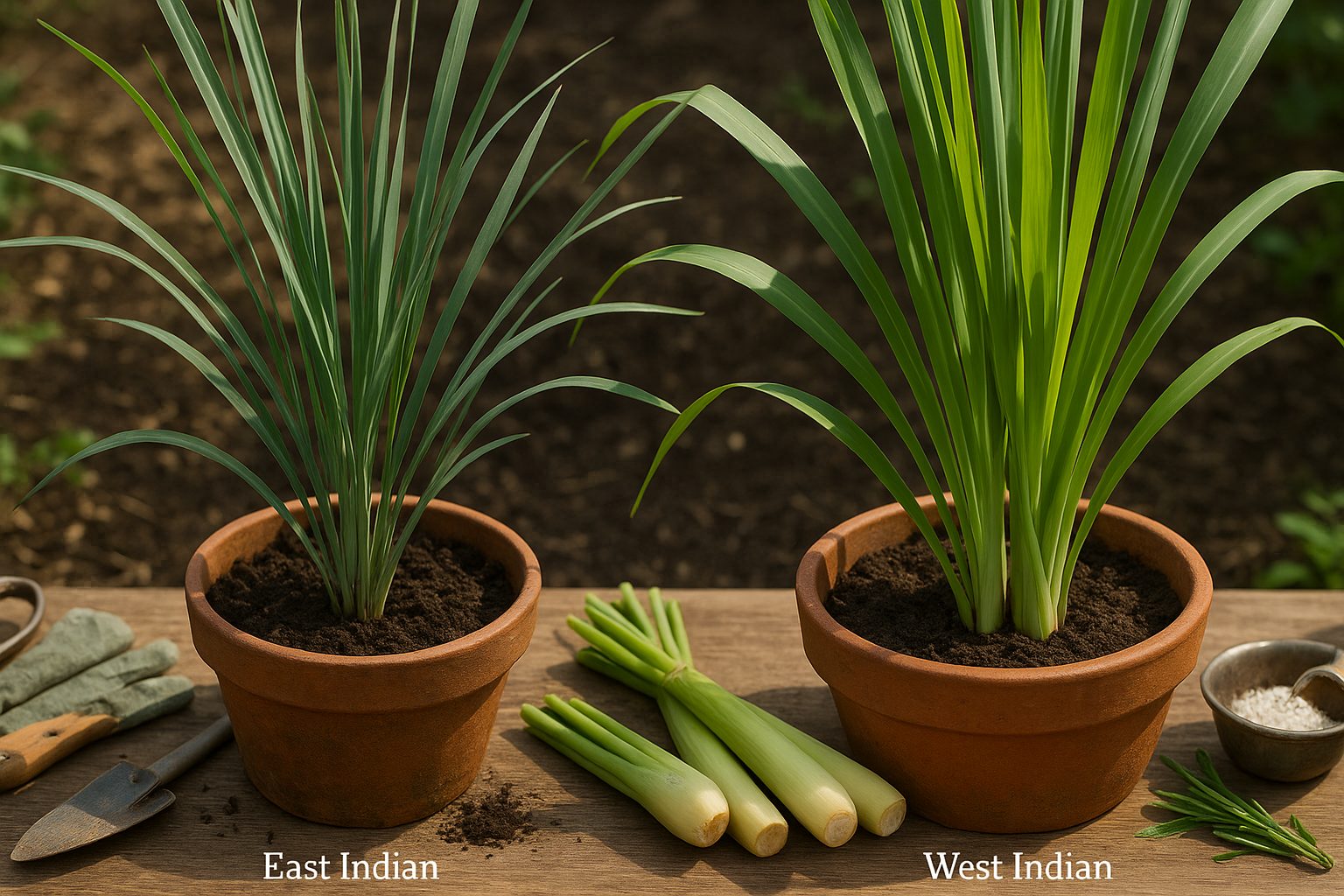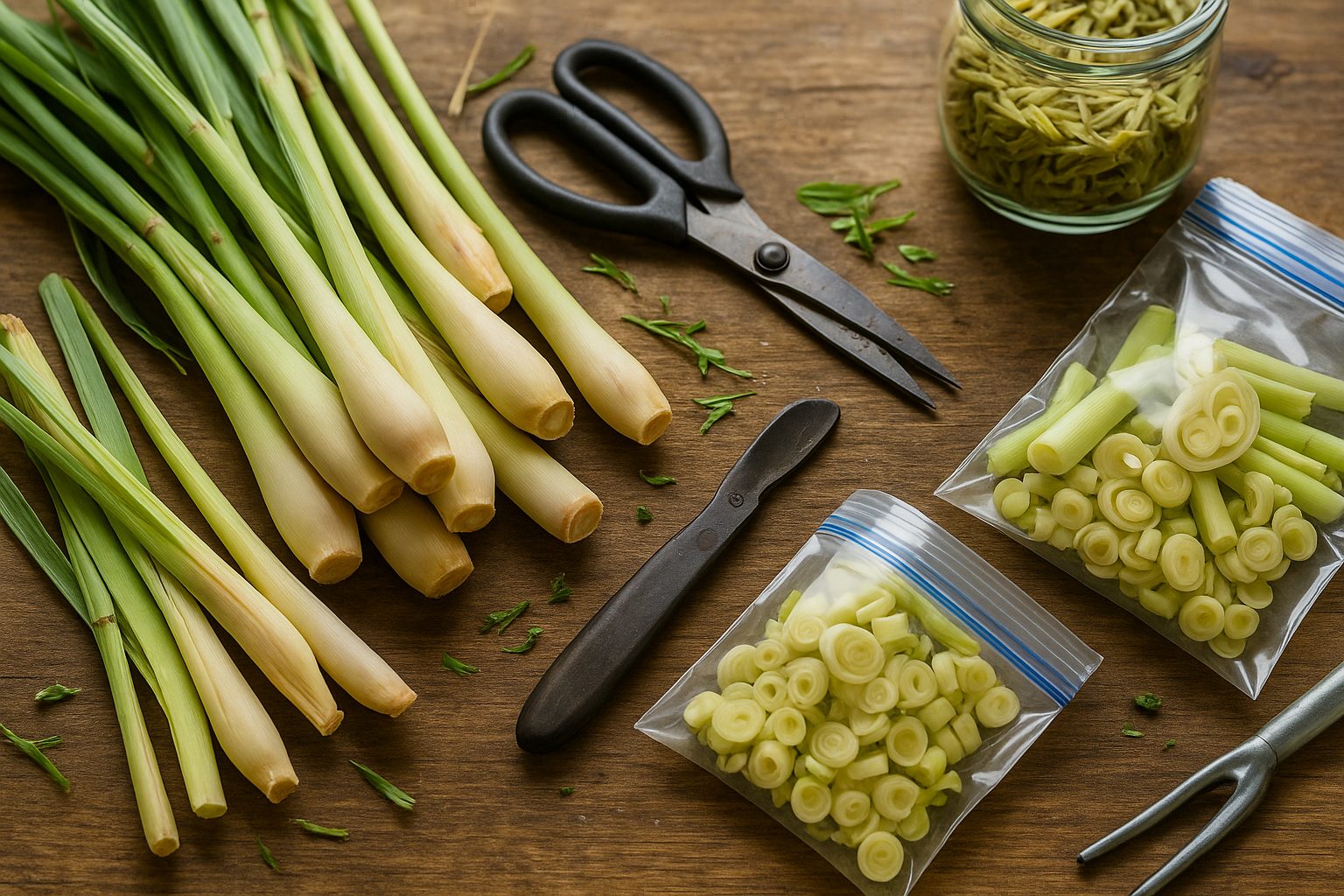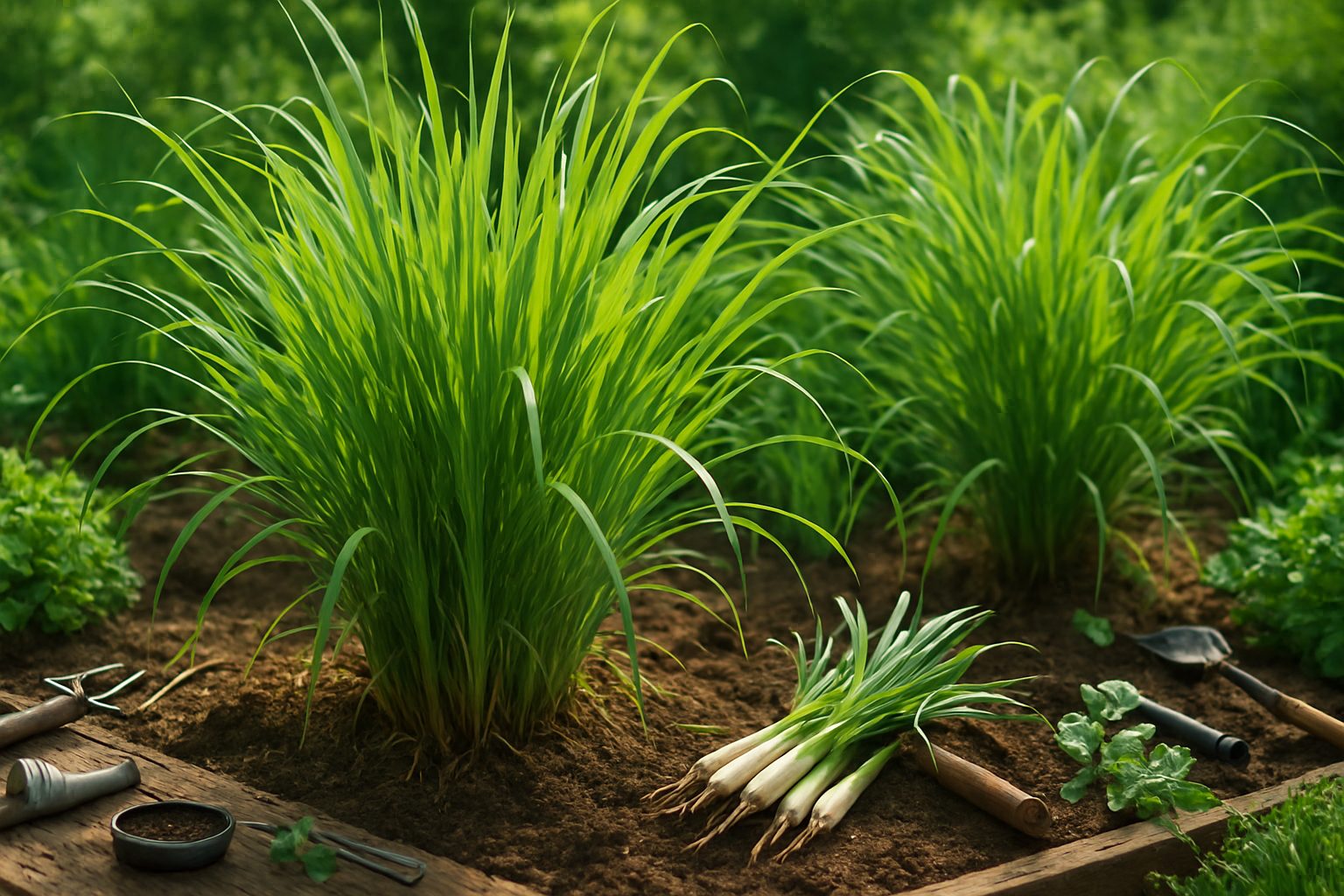Introduction to Growing Lemongrass
Growing lemongrass year-round is a tempting prospect for anyone who loves fresh, fragrant herbs at their fingertips. Lemongrass, a tropical plant known for its citrusy aroma and bright, zesty flavor, is beloved by home gardeners and cooks alike. Not only does it add a burst of freshness to Thai curries, teas, and marinades, but its tall, arching leaves and lush appearance also make it a striking ornamental addition to gardens or containers.
Many are drawn to growing lemongrass because it’s relatively low-maintenance and resilient, thriving in the right conditions with minimal fuss. Whether you have a sunny windowsill, a spacious backyard, or even just a large pot, lemongrass can adapt and flourish if given what it needs.
In this article, we’ll explore whether you can keep this versatile herb growing throughout all four seasons, both indoors and out. We’ll cover the ideal environment lemongrass needs, tips for overwintering and indoor cultivation, common challenges to watch out for, and creative ways to enjoy your harvest. If you’re curious about the secrets to a year-round supply of homegrown lemongrass, read on—we’ll guide you every step of the way.
Choosing the Right Lemongrass Variety

When choosing lemongrass for your home garden, it’s important to pick a variety that matches your climate and goals. The two main types you’ll find are East Indian lemongrass (Cymbopogon flexuosus) and West Indian lemongrass (Cymbopogon citratus).
East Indian lemongrass is better suited for slightly cooler climates or indoor potting, as it’s more tolerant of lower temperatures. In contrast, West Indian lemongrass thrives in tropical and subtropical regions with plenty of sunlight. It’s the most popular choice for both culinary uses and teas, thanks to its strong lemony flavor and minimal seeds.
If you’re growing lemongrass for flavor, look for the West Indian type. But if you want ornamental grasses or essential oils, East Indian might be the better pick.
No matter the variety, be sure to source your plants or seeds from reputable nurseries or garden centers. Healthy starts should have bright green stalks with no brown tips. Consider asking local gardeners for cuttings to ensure your plants are already adapted to your area’s weather.
Before bringing new plants home, take a moment to inspect them for pests or disease—strong starts produce the best harvests.
Planting and Growing Conditions
Lemongrass thrives best in well-draining, loamy soil rich in organic matter, with a slightly acidic to neutral pH of 6.0–7.0. Choose a spot that receives at least six hours of full sunlight daily—too much shade can lead to thin, weak stalks. The plant loves warmth and grows best at temperatures between 70–95°F (21–35°C); it’s not frost-tolerant, so watch out for cold snaps.
Starting Lemongrass
To plant lemongrass from seeds, start them indoors about six weeks before the last frost. Press seeds gently into moist seed-starting mix, cover lightly, and keep warm—germination usually takes 10–21 days. For cuttings, buy fresh stalks with some root base, trim the tops, and place them in a glass of water for one to two weeks until roots appear. Then transplant into pots or the garden. Division is perhaps the easiest method: dig up an established clump, separate sections with roots attached, and replant immediately.
Planting Tips
- If growing in containers, choose a pot at least 12 inches deep with drainage holes to prevent soggy roots. Use a rich potting mix and place it in a sunny spot.
- For in-ground planting, space individual plants about 24 inches apart so their clumps can spread without crowding.
Watering and Maintenance
Water newly planted lemongrass well to settle the roots, then keep the soil consistently moist but not waterlogged. Aim for deep watering once or twice a week, increasing frequency during hot spells or if you have sandy soil. A layer of mulch helps retain moisture and suppress weeds.
Seasonal Care
In cooler climates, bring potted lemongrass indoors for the winter or harvest before the first frost. Regardless of your location, occasional feeding with compost or a balanced fertilizer will encourage lush growth and improve flavor.
Lemongrass Care and Maintenance
Caring for lemongrass is straightforward, but a few thoughtful routines go a long way in keeping your plants healthy and vigorous. Lemongrass prefers consistently moist—but not soggy—soil, so water deeply whenever the top inch of soil feels dry, especially during hot spells.
Applying a layer of organic mulch, such as straw or wood chips, helps retain moisture, suppress weeds, and regulate soil temperature. Because lemongrass is a heavy feeder, use a balanced liquid fertilizer once a month during the active growing season. Compost or fish emulsion works well for an organic boost.
Weeding is important, especially in the first few weeks when shoots are tender. Hand-pulling weeds prevents competition for nutrients and water. Pruning is simple: trim away dead outer leaves regularly to encourage new growth, and cut back stalks to about six inches in late fall if they become unruly.
If you want bushier clumps, pinch off the leaf tips occasionally to stimulate denser foliage. In warm climates, lemongrass grows year-round with little fuss. But in zones where winters dip below 40°F (4°C), protect plants by digging them up before the first frost.
You can pot the clumps and keep them indoors in a sunny window or heated greenhouse—just reduce watering to avoid root rot during the dormant period. As spring returns, gradually reintroduce the plants outdoors to harden them off before planting again.
With just a bit of regular attention to watering, feeding, pruning, and protection from cold, you’ll have flourishing lemongrass ready for culinary or decorative use all season long.
Common Problems and Solutions
Lemongrass is a hardy plant, but it can still face common issues that gardeners should watch for. Pests like aphids and spider mites sometimes attack lemongrass, causing leaves to curl or become sticky. To deal with these pests, you can rinse them away with a strong stream of water or use a gentle insecticidal soap spray.
Fungal diseases, such as rust and leaf blight, appear as yellow or brown spots on the leaves. To prevent these, ensure your plants have good air circulation and avoid wetting the leaves when watering.
Yellowing leaves often indicate environmental problems like overwatering, poor drainage, or nutrient deficiencies. Water only when the top inch of soil feels dry, and consider adding compost or a balanced fertilizer to enrich the soil.
If your lemongrass shows stunted growth, make sure it’s placed in a sunny spot with at least six hours of light and enough space for proper airflow. If the plant looks leggy or weak, trim older stalks to encourage new shoots. Regularly removing dead leaves also helps keep diseases at bay.
By staying observant and adjusting your care routine, you’ll help your lemongrass thrive year-round.
Harvesting and Using Lemongrass

Harvesting lemongrass at the right time ensures you get the most flavor. Wait until the stalks are at least a half-inch thick and about a foot tall, which usually happens after four to eight months of growth. Use a sharp knife or garden shears to cut the stalks close to the soil, selecting only the fattest stalks while letting the others continue to grow.
Immediately peel away the tough outer leaves to reveal the aromatic, tender inner stalk—this is the part used in recipes.
If you have a big harvest, proper storage is key.
- For short-term use, store trimmed stalks in a sealed container or bag in the fridge for up to two weeks.
- For long-term preservation, slice the stalks and freeze them in airtight bags for up to six months, or finely chop and dry the pieces in a warm, well-ventilated area or dehydrator.
- Dried lemongrass can be stored in an airtight jar in a cool, dark pantry and will hold its flavor for several months.
Lemongrass’s refreshing citrus notes make it a star in the kitchen. Add stalks to soups, curries, and teas, or infuse syrups and marinades for a Thai-inspired twist. Use the whole stalk to flavor broths, then remove before serving, or finely mince the tender core for direct use in salads and stir-fries.
Beyond cooking, dried lemongrass can scent homemade candles, potpourri, or cleaning sprays, while fresh leaves make a calming herbal tea or natural insect repellent—just bruise the stalk and rub it on your skin when you’re outdoors.
By harvesting, storing, and exploring varied uses, you’ll get the most out of your garden-fresh lemongrass all year round.
Maximizing Lemongrass Productivity and Benefits
To boost lemongrass productivity and keep your plants thriving, start by planting in well-drained soil and a sunny location, as lemongrass loves warmth and consistent moisture. Regularly trim older stalks to encourage fresh growth and prevent overcrowding, which can lead to disease. Incorporate organic compost or mulch to nourish the soil and retain moisture—this makes a noticeable difference in yield over time.
If you live in a cooler climate, try growing lemongrass in large pots; this allows you to move the plants indoors during frost and enjoy fresh stalks year-round.
Beyond its hardy nature, lemongrass offers wonderful rewards: its citrusy flavor brightens teas and stir-fries, while the plant itself is rich in antioxidants, vitamins A and C, and minerals that support immune health. Simply brush your hand along the leaves and notice the uplifting aroma—an instant mood boost and a natural insect repellent for your garden!
Don’t be afraid to try different spacing, watering routines, or companion plants to see what works best in your environment. Share your experiences and tips with fellow gardeners—community knowledge is a powerful tool for everyone aiming to grow lush, flavorful lemongrass at home.
